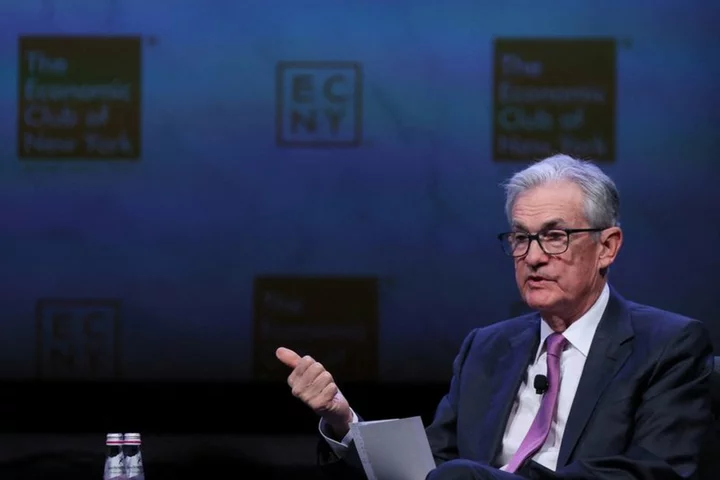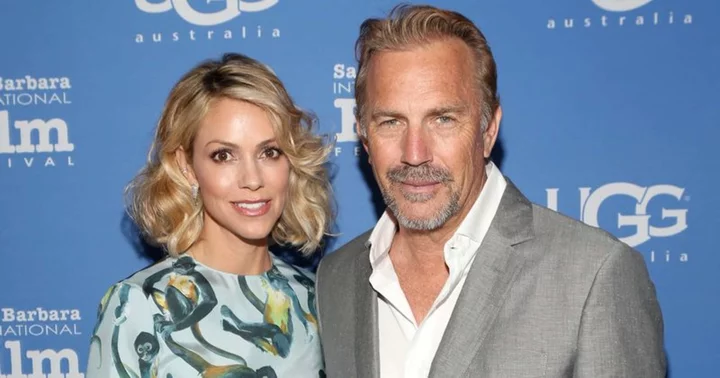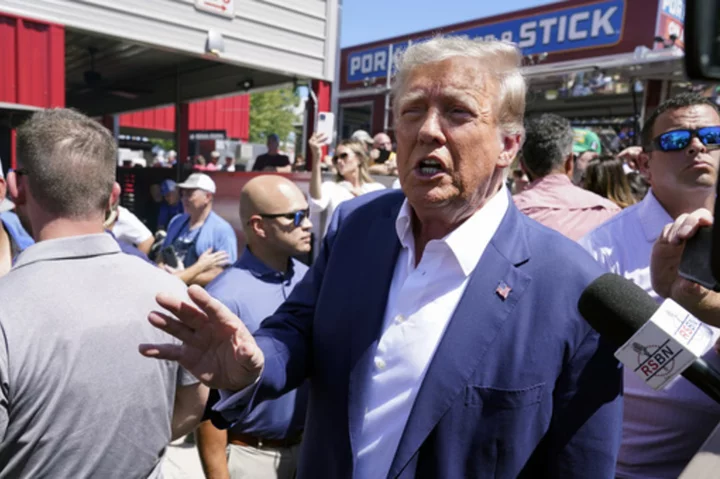By David Randall and Davide Barbuscia
NEW YORK Some investors believe a bond market selloff that has pushed the benchmark U.S. Treasury yield to 5% may have more room to run, as the Federal Reserve gives little indication of veering from its "higher for longer" mantra.
Fed Chair Jerome Powell walked a narrow line in his speech before the New York Economic Club on Thursday, saying the stronger-than-expected economy might warrant tighter financial conditions while also noting emerging risks and a need to move with care.
Still, some traders interpreted his comments as an endorsement of keeping rates around current levels through most of next year. Yields on the benchmark 10-year Treasury, which move inversely to bond prices, rose briefly to 5% late on Thursday, a closely watched level not seen since 2007. Stocks sold off on Thursday with the S&P down 0.85%.
“The underlying message is 'don’t be looking for a bailout from the Fed anytime soon,'” said Greg Whiteley, a portfolio manager at DoubleLine. "That gives people the go ahead to take rates above 5%.”
Whiteley said that he sees 10-year yields moving as high as 5.5% before peaking.
An extended climb in Treasury yields risks exacerbating the pressures that have dogged a broad array of assets in recent months. U.S. government bonds are on track for an unprecedented third straight year of losses, while the S&P 500 is off 7% from its July high as the promise of guaranteed yields on U.S. government debt draws investors away from equities. Credit spreads have widened in recent weeks, while mortgage rates have crept up to their highest since 2000.
"What really matters to the markets is how long we sustain 5% interest rates or higher and what sort of damage that does to the economy as a whole,” said Gennadiy Goldberg, head of U.S. rates strategy at TD Securities. He believes a sustained move above 5% on the 10 year yield is "not out of the question."
“The longer we remain at higher interest rates, the more likely something is to break," Goldberg said.
Expectations that the Fed’s aggressive monetary tightening may cause a recession were pushed back several times over the past year as economic activity has proved more resilient to higher borrowing costs than many had predicted.
Powell on Thursday also nodded to the "term premium" as a driver for yields. The term premium is the added compensation investors expect for owning longer-term debt and is measured using financial models. Its rise was recently cited by one Fed president as a reason why the Fed may have less need to raise rates.
Sameer Samana, senior global market strategist at the Wells Fargo Investment Institute, said that higher yields and more broadly tightening financial conditions were “doing the Fed’s work for it” by tamping down growth and helping cool inflation.
While interest rate increases have an immediate impact on short-term yields, the recent surge in long-term bond yields indicates the market has embraced the idea that rates will remain higher for longer. “The Fed needs both barrels firing and now the long end of the curve has finally bought in that Fed won’t cut rates soon and when they do they won’t be sizable,” he said.
Alan Rechtschaffen, senior portfolio managers and financial advisor at UBS Global Wealth Management, was among those wary of the knock-on effects elevated yields could have.
“The Fed has to be cautious here because I don’t know that they’re entirely secure in being able to predict what’s going to happen next,” said Rechtschaffen, who believes yields will top out at around 5%, though a small risk exists of them going “significantly” higher.
Others saw hints of dovishness in Powell’s remarks, or at least caution. The Fed, Powell said, is "proceeding carefully" in evaluating the need for any further rate increases, a remark that left intact expectations that the Fed will keep its benchmark policy rate steady at the current 5.25% to 5.5% range at the upcoming Oct. 31-Nov. 1 meeting.
"There was an underlying sense of patience and caution, given the potential for delayed impacts of the tightening to date,” said Robert Tipp, chief investment strategist and head of global bonds at PGIM Fixed Income.
Still, even if the Fed cuts rates over the next few years, yields could stay above 5% if inflation and growth remain high, he said.
"A 5% yield is a shocking number ... but the fact of the matter is that we're back up to a level of rates that's appropriate for this level of economic activity," said Tipp.
(Reporting by Davide Barbuscia and David Randall; Additional reporting by Saqib Iqbal Ahmed; Editing by Ira Iosebashvili, Megan Davies and Shri Navaratnam)









